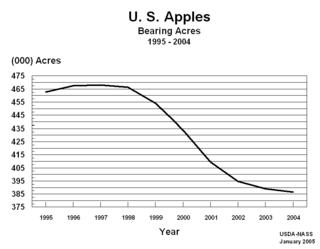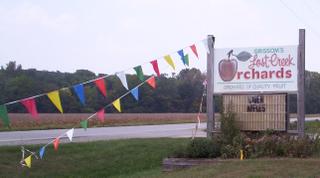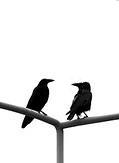Ambrosia ™
Appears to have a fairly narrow picking window, which appears to be right after “Empire” here in the Northeast. It will store exceptionally well if it is not harvested too late. In the U.S.A., the “Ambrosia” apple will be under the management of McDougall and Sons of Wenatchee, Washington. McDougall and Sons Inc. in partnership with Columbia Marketing have signed an exclusive license agreement with PICO to grow and market this variety in the United States. The acreage allocated to McDougall and Sons Inc. of this cultivar in the United States is reported to be filled.
Pinova
A.k.a. “Sonata” and “Corail” has been renamed by its new owners in the U.S. to Piñata (U.S. Plant Patent #11601). Stemilt has purchased this cultivar and will monitor and limit the production of it. Stemilt is developing promotional programs for this cultivar.
NovaSpy
This is the cultivar that had a lot of attention paid to it in Michigan at their Hort Show last December. Growers in Michigan are looking for grower friendly cost - effective cultivars to produce for the processing market in Michigan. “NovaSpy” is out of the Nova Scotia Breeding program and was introduced in 1986. It has an intense sweet-tart flavour and is highly suitable for baking. The fruit are similar to “Northern Spy”. It is scab resistant and the tree habit is more of a semi spur and quite easy to work with. The tree is moderately productive and an annual bearer. The fruit ripen mid October and have a long storage potential with no major storage disorders.
Bohemia®
A red bud mutation of the winter cultivar “Rubin”, as discovered in 1984 by Mr. Josef Thor in Pencine, Czech Republic 300 meters above sea level. This cultivar performs better in a cooler climate. The scion is considered to be high in vigour. The original “Rubin” is a cultivar that resulted from a cross of “Lord Lambourne” and “Golden Delicious”. “Bohemia” has many of the physical characteristics of “Lord Lambourne”. “Bohemia” is attractive and aromatic, intended for fresh market sales but also useful for cooking. It carries a relatively good tolerance to scab infection and is harvested in the “Empire” season. “Bohemia” stores very well and has a bud sport that produces a yellow apple called “Bohemia Gold”. This cultivar is protected by registration. Propagation of “Bohemia” for commercial production has an attached royalty. This cultivar was added to our Provincial Cultivar Trials during the 2004-planting season.
From OMFRA:
http://www.omafra.gov.on.ca/english/crops/hort/news/orchnews/2005/on_0305a3.htm
Tuesday, December 20, 2005
Wednesday, November 23, 2005
APPLE #3 SHIZUKA

From Japan comes this Golden Delicious and the Indo cross breed. Very firm and similar to the mutsu in many regards. The large and firm apple is yellow with pink blush; very sweet with low acidity. It sems to keep well. I hope it catches on.
Available at Raintree:
http://www.raintreenursery.com/catalog/specials.cfm
It’s hard to believe, but many cultivars of apple that we consider to be modern were selected decades ago by breeders in other parts of the world. Take for instance this “Shizuka” apple. While it debuted in the USA at the Brock Conference, it was first selected and introduced in 1949 from Japan.
Thursday, October 20, 2005
This is not an apple

http://www.magritte.com/
Surrealism is a strange place of course. René Magritte painted an apple in 1964, then said it was not an apple. My only question is... what kind of apple is it not?
Thursday, October 13, 2005
APPLE #4 MCINTOSH
 McIntosh spent time on the frontier before settling in Dundas County, Ontario, Canada, in 1790. The town where he settled was later called McIntosh's Corners, and is now called Dundela.
McIntosh spent time on the frontier before settling in Dundas County, Ontario, Canada, in 1790. The town where he settled was later called McIntosh's Corners, and is now called Dundela.While clearing some land in 1796, McIntosh discovered about 20 young apple trees. He transplanted the trees to a place near his home, but by 1830, only one tree was still alive. McIntosh combined his own name with the colour of the fruit, and called the tree the "McIntosh Red".
From the time the tree was first transplanted it produced an abundance of tasty apples. In 1893, the McIntosh house caught fire and the tree, located just 15 feet from the house, was badly burned along one side. However, the healthy side continued to produce apples until 1908.
Fortunately, as early as 1836, McIntosh's son Allan began grafting parts of the tree so that it could be grown in other places by other farmers.
Two monuments stand at Dundela commemorating McIntosh and his wonderful apple.
Sunday, September 25, 2005
News blurb #1

Bottom Flap, Front page, Right side bar USA Today. PROLIFIC APPLE PRODUCTION, the 2004 apple Crop had the largest yeild in years. Average annual yeild per acre (in tons) up since last year. It's been trending upward from 11.6 in 1993 to 13.5 in 2004.
http://www.usda.gov/nass/
Thsi of course is basicly a lie. While the yeild per acre has increased slightly, the number of acres has dropped like a rock. http://www.usda.gov/nass/aggraphs/histbaap.htm

Why would they propogate this lie? Maybe because apples are a great symbol of our rich American culture. Maybe the idea that your granny Smiths somce from Turkey is unappealing for politically aware consumers. I dont know. BUT GET YOUR POLITICS OUR OF MY APPLE ORCHARD!
Saturday, September 10, 2005
Apple #1 OZARK GOLD
I got off of Route 70 West on the way to St. Louis in  response to the signs. I met Mr. Grissom himself and learned much. His command of apple lore was top notch and he is the proud cultivar of numerous antique varieties, some of which were new to me. I bought a bag of Ozark golds which are not an antique variety. You can see a nice close up at this lovely site: http://www.applejournal.com/gal004.htm
response to the signs. I met Mr. Grissom himself and learned much. His command of apple lore was top notch and he is the proud cultivar of numerous antique varieties, some of which were new to me. I bought a bag of Ozark golds which are not an antique variety. You can see a nice close up at this lovely site: http://www.applejournal.com/gal004.htm
They are a relative of the golden delicious but do not share the grainy texture. Instead they are oddly watery and not as sweet. Their flavor is concentrated in the skin which persists in the mouth. I had a slice and was very surprised.
more here:
http://horticulture.missouri.edu/apple/ozarkgold.htm
 response to the signs. I met Mr. Grissom himself and learned much. His command of apple lore was top notch and he is the proud cultivar of numerous antique varieties, some of which were new to me. I bought a bag of Ozark golds which are not an antique variety. You can see a nice close up at this lovely site: http://www.applejournal.com/gal004.htm
response to the signs. I met Mr. Grissom himself and learned much. His command of apple lore was top notch and he is the proud cultivar of numerous antique varieties, some of which were new to me. I bought a bag of Ozark golds which are not an antique variety. You can see a nice close up at this lovely site: http://www.applejournal.com/gal004.htmThey are a relative of the golden delicious but do not share the grainy texture. Instead they are oddly watery and not as sweet. Their flavor is concentrated in the skin which persists in the mouth. I had a slice and was very surprised.
more here:
http://horticulture.missouri.edu/apple/ozarkgold.htm
Thursday, August 25, 2005
Subscribe to:
Posts (Atom)
